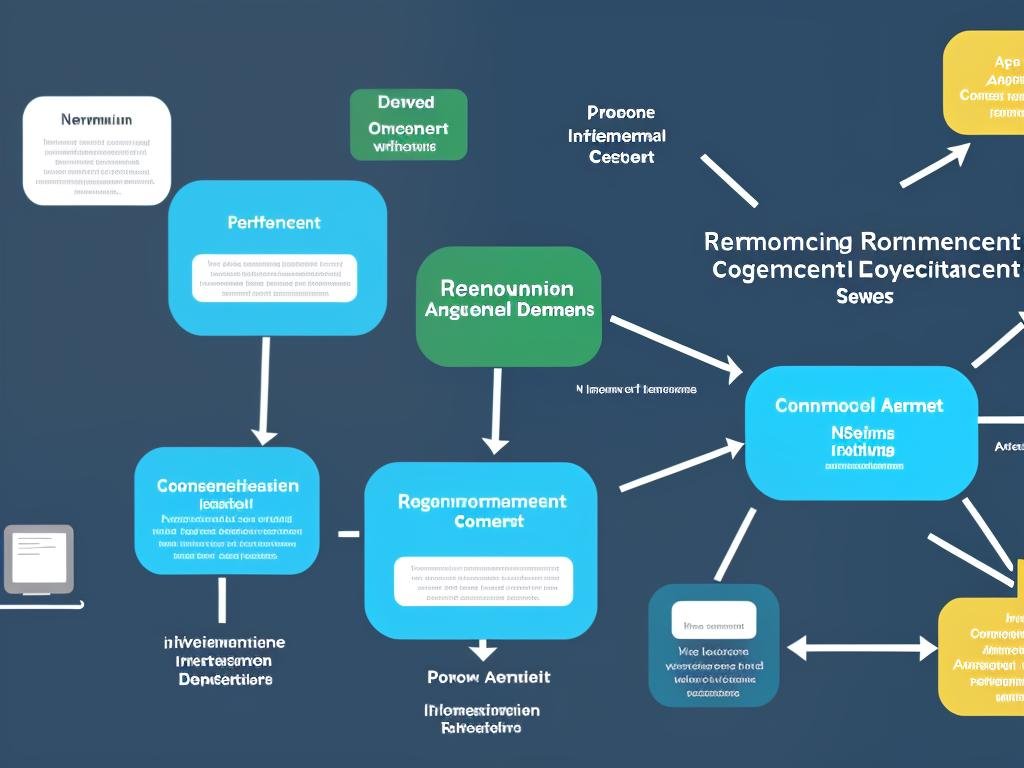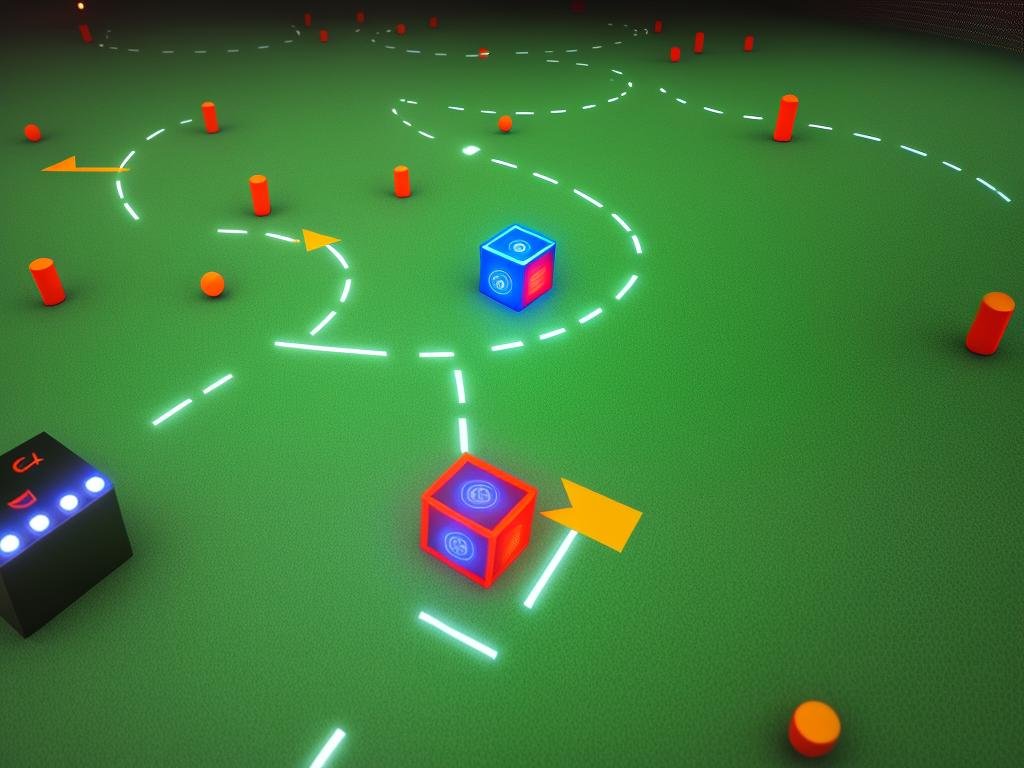In an era where machine learning and artificial intelligence are inherently revolutionizing various sectors, understanding the instrumental role of Reinforcement Learning (RL) is crucial. As its own niche within the broader sphere of machine learning and AI, RL ingeniously employs fundamental aspects like an agent, an environment, states, rewards, actions, and policies. This synergistic interplay breaks down complex decision-making processes into comprehensible and manageable components, leading to a fascinating and symbiotic paradigm of learning from interaction. Embarking on this enlightening journey, we delve into the intricate details of RL, its types and applications, the key algorithms and techniques deployed, and explore future challenges, as well as potentials.
Understanding Reinforcement Learning
Understanding Reinforcement Learning: The Basics
Reinforcement Learning (RL) is a subset of machine learning which broadly comes under Artificial Intelligence (AI). This AI strategy enables software agents and machines to improve their performance based on feedback and experience. Reinforcement Learning, often likened to behavioral psychology, seeks to enable machines to learn from the consequences of their actions in a given environment, hence, automating decision-making for optimal results.
Key Components of Reinforcement Learning
- Agent: This is the decision-making entity which interacts with the environment in pursuit of a goal. In the context of a chess game, the agent would be the AI that’s making decisions and moves.
- Environment: The environment refers to the context or world within which the agent operates. For our chess game, the environment would represent the chessboard and the pieces on the board.
- State: A state defines the situation at a particular instance. It represents the agent’s current understanding or view of the environment. Considering the chess example, a state would be the arrangement of all the pieces on the board at any given moment.
- Action: An action signifies the possible moves or steps that an agent could take in a state. For instance, moving a pawn forward is an action in our chess game.
- Reward: All actions taken by the agent are assigned a numerical reward or penalty. The goal of reinforcement learning is to maximize the cumulative reward. If the AI playing chess makes a good move, it receives a positive reward. If it loses the game or maneuvers a bad move, it could receive a negative reward or penalty.
- Policy: A policy defines the agent’s learning method or the strategy that the agent uses to determine the next action based on the current state. For instance, in chess, the policy may involve a strategy of moving the queen out early in the game.
Understanding the Basics and Applications of Reinforcement Learning
Reinforcement learning is a dynamic process in which an agent experiences constant interaction with its environment. This involves taking actions, switching between different states, and obtaining rewards. The agent operates based on a specific policy. As the agent learns more about the environment, this policy is updated to outline which actions are advantageous and which are not.
The objective of the agent is to identify the optimal policy, the one that will result in the highest cumulative reward. However, this optimal path must be searched for among a myriad of potential scenarios. Sometimes, the action that yields instant gratification may not necessarily lead to the best ultimate reward. This conundrum is referred to as the exploration-exploitation trade-off. While exploration involves experimenting with new and potentially better actions, exploitation involves adhering to actions that have proven beneficial in the past.
The versatility of reinforcement learning allows it to be utilized in a multitude of sectors, such as game AI, robotic navigation, resource management, and healthcare, to name but a few. The inherent complexity and dynamism of reinforcement learning make it a leading-edge area of AI research. Gaining a fundamental understanding of these principles is essential for anyone delving into the realm of contemporary machine learning.

Types of Reinforcement Learning
Diving Deeper into Reinforcement Learning
Reinforcement Learning (RL), an integral branch of machine learning, empowers an agent to learn decision-making skills by engaging with its environment. Unlike other learning algorithms where the correct answer is provided, RL lets the agent learn through a process of trial-and-error. Consequently, over a period, the agent discerns which actions enhance its chances of accomplishing its objectives.
Model-Based Reinforcement Learning
Model-based RL is a type of reinforcement learning that involves learning a model of the environment and utilizing it for decision-making. In this method, the agent uses its history of interactions to build a predictive model of the environment. It then uses this model to simulate the consequences of its actions and choose the actions that optimize future rewards.
The main advantage of this type of RL is that the model can predict the future outcome of actions, which enables efficient planning. However, the model-based RL has a downside; the complexity of creating an accurate model can be challenging. Especially in complex environments, the training process can be time and resource-intensive.
Model-Free Reinforcement Learning
In model-free RL, the agent doesn’t maintain a model of the environment. Instead, it learns from its experiences directly. This learning takes one of the two forms: policy-based or value-based approaches.
Model-free RL has an advantage in terms of simplicity, as there’s no need to construct a model of the environment. However, its major challenge is that it typically requires more interactions with the environment to learn effectively, which could be harmful in scenarios where trial-and-error carries high risk or cost.
Policy-Based Reinforcement Learning
Policy-based RL is a form of model-free reinforcement learning where the agent focuses on learning the best policy directly—a policy being a mapping from states to actions. Here, the agent directly optimizes the actions it should take under certain circumstances for maximum rewards. However, the major challenge in policy-based methods is devising an efficient way to update the policy without disrupting the performance achieved by the current policy.
Value-Based Reinforcement Learning
Another approach to model-free RL is the value-based method. Instead of learning the policy directly like in policy-based RL, here, the value of each state or action is estimated. This value estimation aims to predict the expected long-term return with each possible action. The agent then uses these value estimates to make informed decisions.
Despite its efficiency, a significant challenge is that value-based RL can lead to over-estimations of action values due to biases in the agent’s decision-making process.
Hybrid Reinforcement Learning
Hybrid RL combines parts of both model-based, model-free, and policy-based learning methods to address these methods’ individual limitations. It usually involves maintaining both a model of the environment and directly learning value or policy functions based on immediate feedback. This combination gives the learning process higher flexibility and adaptivity.
The main challenge of hybrid RL is determining how best to balance and integrate the strengths of each component method for the situation at hand.
Ultimately, the choice of reinforcement learning method hinges on the specific needs and circumstances of each situation. Each method has its distinct strengths and weaknesses, making some more applicable than others in different situations. The crux of making a good selection is rooted in a clear understanding of how each method functions.

Key Algorithms and Techniques
Diving Deeper: An Overview of Critical Reinforcement Learning Algorithms and Techniques
Reinforcement Learning (RL), a subset of machine learning, offers a framework where an agent progresses towards competent decision-making through interaction with its environment. The primary goal here is to train the agent to undertake a sequence of decisions which maximize the reward signal. Various algorithms play essential roles in RL, which encompass Q-Learning, Monte Carlo methods, Temporal Difference, and Deep Q Networks.
Q-Learning
Q-Learning is a value-iteration algorithm in RL that seeks to find the best action to take given a current state. The key idea is to use a function Q that gives the agent a measure of the total reward that can be obtained, starting at state s and picking action a. Q-Learning has the advantage of being able to compare the expected utility of the available actions without requiring a model of the environment.
The Q-Learning algorithm produces a Q-table as output, which guides the agent to the best action per possible state. The agent then updates the state-action values (Q-values) in the Q-table using the Bellman equation, which forms the heart of the Q-Learning algorithm. It reinforces the agent’s action that leads to a state with a maximum reward.
Monte Carlo Methods
Monte Carlo Methods, named after the Monte Carlo Casino, are learning methods based on averaging sample returns. They come into play when all the episodes are terminated. That is to say; they are handy when the tasks are episodic and involve determining an optimal policy.
Unlike other methods, Monte Carlo methods do not bootstrap; they function primarily by averaging rewards following visits to states or state-action pairs. Monte Carlo methods might be less efficient than bootstrapping methods, but they make up for it by being quite straightforward to understand and use.
Temporal Difference Learning
Temporal Difference (TD) learning is an RL algorithm that combines the ideas of Monte Carlo methods and Dynamic Programming methods. TD learning methods take the best of both worlds: they are less computationally expensive than Monte Carlo since they do not require complete episodes to update state estimates. They also do not need to know the model of the environment, like Dynamic Programming.
TD learns from the difference between estimated values of successive states, making it faster and more efficient to converge on the optimal policy than Monte Carlo.
Deep Q Networks
Deep Q Networks (DQN) combine Q-Learning with deep neural networks. Deep learning can handle complex, high-dimensional environments, and Q-Learning can deal with decision-making tasks, making them a powerful combination.
DQN uses a neural network as a function approximator for the Q-function. By mapping states to Q-values, the DQN can handle high dimensional spaces more efficiently and thereby manage tasks of higher complexity.
Understanding Experience Replay and Target Networks
Experience Replay and Target Networks are essential techniques employed to improve and stabilize Reinforcement Learning (RL) algorithms. In layman’s terms, Experience Replay involves the agent storing all its experiences at each step of interaction with its environment into a form of ‘experience’ data bank.
This ‘experience’ information is then replayed back in random small batches as though they are unrelated and similarly distributed. By doing this, the learning process is normalized, reducing the interrelation between different experiences and optimizing the use of past experiences. This process significantly enhances the efficiency of the RL algorithm.
Meanwhile, Target Networks are primarily used to calculate the estimated Q-values needed for the Deep Q-Network (DQN) update. The core strategy here is maintaining the target function’s stability for multiple updates, avoiding erratic changes in approximated values. This stability subsequently accelerates and improves the efficiency of learning in RL tasks.

Applications and real-world examples
The Application of Reinforcement Learning in the Gaming Industry
The gaming industry stands as one of the most prominent beneficiaries of reinforcement learning. An apt example of this is Google’s DeepMind’s creation—AlphaGo. This AI algorithm used reinforcement learning to master the highly complex game of Go. Typically, Go, renowned for having more possible moves than there are atoms in the universe, posed a significant challenge in error prediction. Regardless, AlphaGo was not only able to master the game but also defeated the world champion in Go.
DeepMind didn’t stop there. The company further advanced its technology, which led to the development of AlphaZero. This advanced version can master several games like chess and shogi without any pre-existing game knowledge, purely through self-play and reinforcement learning. Reinforcement learning’s application in gaming exemplifies how it can facilitate advanced problem-solving and strategic thinking.
Robotics and Autonomous Vehicles
Robotics is another field where reinforcement learning has seen meaningful application. Robots often operate in dynamic, unpredictable environments, making traditional rule-based programming insufficient. Reinforcement learning helps fill this gap, allowing robots to learn how to behave based on trial and error.
Autonomous vehicles, in particular, are benefiting from this approach. Companies such as Waymo use reinforcement learning to teach self-driving cars how to navigate complex, real-world scenarios. Trials in numerous possible situations allow these cars to learn, adjust, and enhance their performance, making them safer with each attempt.
Reinforcement Learning in Finance
The financial sector is another area where reinforcement learning can have significant impact. It can assist in optimizing trading strategies, asset allocation, and portfolio management. For instance, J.P. Morgan developed LOXM, a trading algorithm that uses reinforcement learning to execute customer orders at the optimum price and in the minimum possible time.
Healthcare and Medical Field Applications
In the medical field, reinforcement learning has been used in a unique, life-saving way. It has helped create algorithms that can identify the best personalized treatment plans for patients with chronic conditions or complex diseases, such as cancer. The reinforcement learning algorithm learns from the patient’s response to different treatments and adapts the subsequent therapy accordingly. This personalized approach has the potential to improve patient outcomes significantly.
Manufacturing and Industrial Automation
In manufacturing and industrial automation, reinforcement learning can enhance processes from predicting machine failure to optimizing resource allocation. Siemens, for example, used reinforcement learning to successfully reduce its robotic arm assembly line’s energy consumption by 30%.
Reinforcement Learning in Customer Experience Strategies
Businesses utilize reinforcement learning to enhance their customer experience strategies. Amazon, for example, uses it to fine-tune its recommendation systems, tailoring suggestions for each customer based on their buying history, most viewed product categories, etc.
A Final Word
From its ability to make crucial decisions through interactions with an environment, reinforcement learning has emerged as an invaluable tool spanning various sectors. Its use in real-world settings underscores its capabilities in tackling complex optimization challenges and adjusting to environments marked by dynamism and uncertainty.

Challenges and Future of Reinforcement Learning
The Complexities of Reinforcement Learning
Indeed, Reinforcement Learning (RL) employs a unique approach where agents attempt to identify superior actions and policies to receive an optimal reward. However, it doesn’t come without its unique set of challenges that can impact its overall effectiveness and efficiency.
One of these is the exploration-exploitation tradeoff. Here, the RL agent needs to maintain a delicate balance between venturing out into different actions to acquire enhanced rewards and utilizing past knowledge for immediate gains. The end goal is to explore the state-action space sufficiently without compromising efficiency for a higher reward.
Likewise, the management of large and complicated state-action spaces presents an ordeal. There are often situations in the real world where state spaces and action spaces become massive and high-dimensional. As the number of states and actions increases, the computation process also becomes exponentially more complex, turning learning into an intimidating task and potentially causing scalability problems for current RL algorithms.
A last noteworthy challenge is delayed reward problems. There are instances where an action doesn’t result in an immediate payoff, and the benefit is only recognized in later steps. This is commonly referred to as the ‘credit assignment problem’, where attributing individual actions for the final outcome becomes a formidable task. Resolving this issue effectively remains a considerable challenge in the field of reinforcement learning.
Current trends and future directions in Reinforcement Learning
RL, despite its challenges, is a rapidly developing area of study in AI and machine learning, with ongoing research promising potential breakthroughs to overcome its limitations. Here are some of the trends and future directions.
Deep Reinforcement Learning (DRL) is one significant trend in RL. DRL uses deep learning and neural networks to approximate the value functions, thereby handle large state-action spaces. With the power of deep learning, DRL algorithms can learn from raw pixels and requires less feature engineering than other RL algorithms, making them a promising tool for practical applications.
Multi-agent reinforcement learning (MARL) is another exciting direction moving forward. Here, several learning agents interact simultaneously with an environment, allowing for the implementation of RL in complex scenarios. It has potential applications in areas such as robotics and autonomous vehicles.
Advancement in exploration strategies is another area where RL might make significant strides in the future. Novel strategies are being explored to improve how RL agents balance the exploration-exploitation tradeoff, improving overall performance.
Finally, to tackle the challenge of the delayed rewards problem, eligibility traces are advancing quickly. Eligibility traces are a technique where the agent keeps a trace of past actions and states, thereby providing a method to credit or blame past actions for future rewards or punishments.
In conclusion, while challenges in RL remain, the future of RL looks promising, and these challenges are the driving force behind groundbreaking innovation and research in this field. As we continue to rely more on automation and AI,RL will play an increasingly pivotal role in advanced application areas, making it a critical direction for future AI research.

Photo by mike_meyers on Unsplash
Indeed, RL can be viewed as an artistic blend of exploration and exploitation, where intrinsic challenges like dealing with expansive state-action spaces and deferred reward problems emerge. Yet, the technological advancements and innovative solutions conceived to overcome these hurdles are nothing short of remarkable. It is the impressive array of real-world applications, from video gaming and robotics to even finance and healthcare, that truly accentuates the pervasive impact of RL. Correspondingly, the future of RL seems vibrant and filled with possibilities – a beacon of hope in addressing some of the most perplexing quandaries in artificial intelligence and machine learning.




